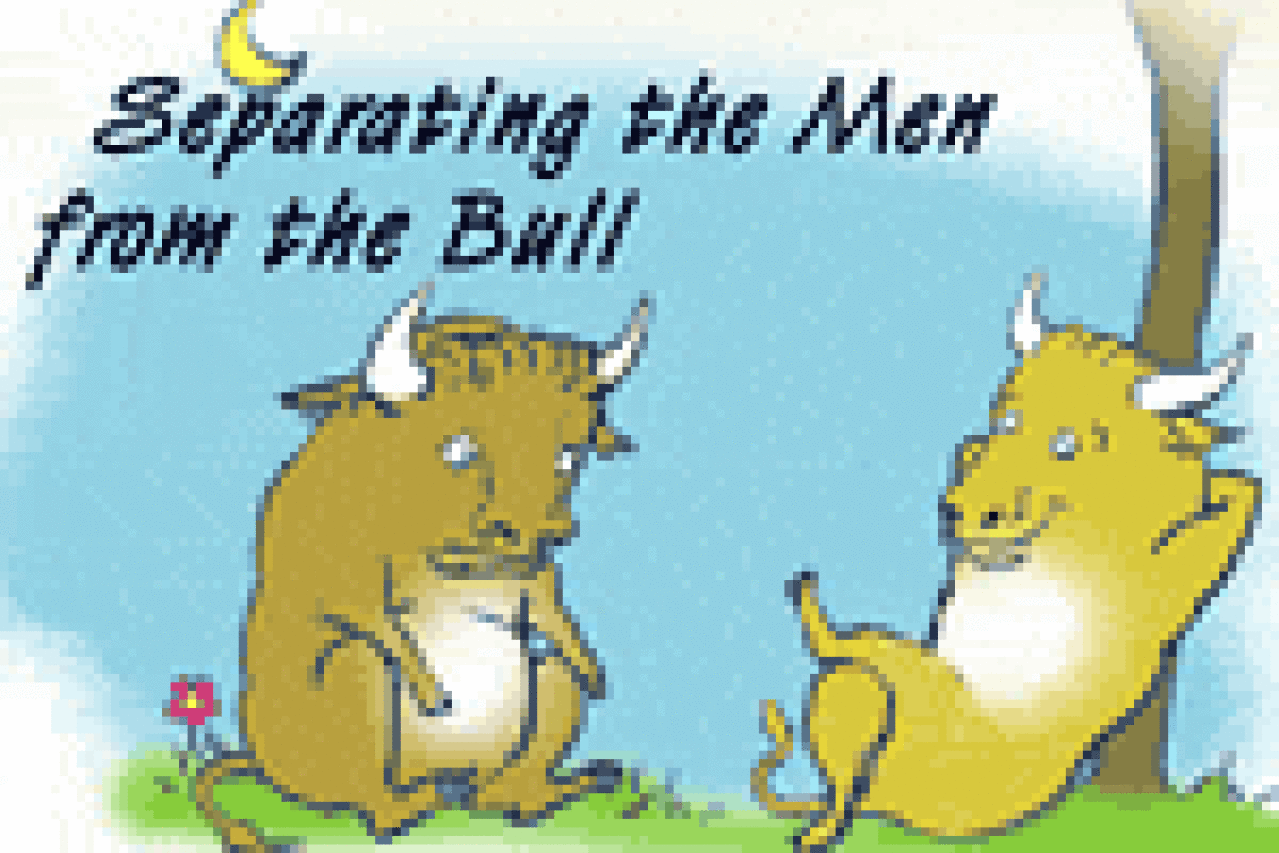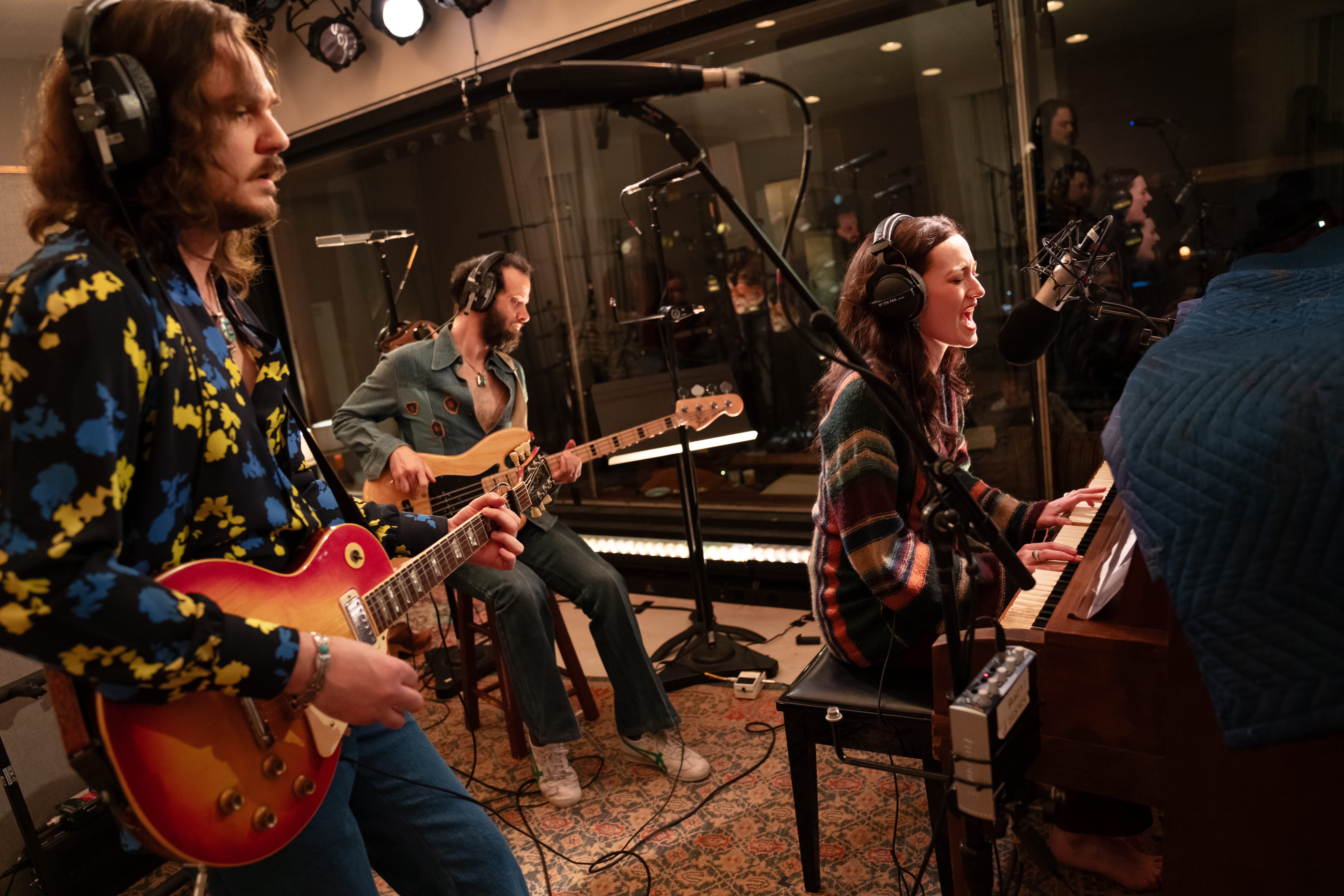Separating the Men from the Bull

Separating the Men from the Bull
(Photo © Joseph T. Barna)
It’s said that most men don’t communicate their emotions very well. If they do talk, it’s all braggadocio and half-truths. Separating the Men from the Bull, written by Mike Heintzman and Neal Lerner, is a series of comic sketches exploring male relationships. In it, the authors exploit, parody, and/or complicate various stereotypes relating to men and the ways in which they articulate — or fail to articulate — what they’re actually feeling.
The two-actor comedy is intermittently funny and occasionally insightful. It begins with Man (Daniel Jenkins) visiting the “Friend Finder Department” to look for a new friend, as he’s lost his old one. The officious Mister (co-author Lerner) takes down his information, making wry and sarcastic observations about Man all the while. The scene resembles a Monty Python sketch; it’s amusing, and it starts the night off well.
In the show’s funniest sequence, the actors are transformed into bulls. This is accomplished through the wearing of cardboard “horns” and bull “bodies” painted onto cardboard placards, which the actors hold in front of them. Teddy (Lerner) is the prize bull who’s supposed to be the big stud — but, lately he’s been suffering from impotence. “I’m not a piece of meat to be used and abused,” says Teddy. “I got feelings. Just once, I’d like to graze a while and smell the flowers, have a conversation with a heifer without it ending in a humpfest.” Clyde (Jenkins), another bull in the herd, tries to help Teddy through these not-so-hard times. He suggests a bit of role play, and Jenkins’s performance as the cow Juanita is hysterically funny.
While the majority of sketches concern the bonds between heterosexual men, one examines gay male relationships. It starts out rather stereotypically, with both actors affecting pronounced “gay” mannerisms; but, by the end of the scene, some interesting issues have been raised as to the thin line between friendship and love.
A few of the scenes misfire. One in which Jenkins and Lerner portray 10-year-old boys quickly becomes tiresome; another, set in a hospital, is likewise neither amusing nor interesting. The characters from the opening sketch return at various points in the show but, each time, their scenes get worse and worse. Their final appearance features incredibly stupid, unbelievably corny dialogue.
Lerner and Jenkins are engaging performers, and their high-energy antics often evoke laughter even when the material is thin. Jenkins is recovering from a torn ligament, so he’s on crutches at certain points in the show; while this has necessitated a few changes in blocking, such as the dance number in the gay club scene, the simplicity of director Becky London’s staging largely makes it a non-issue. There’s no set to speak of, other than the occasional table, chair, or stool. Allison Hope’s lighting helps to differentiate the scenes, as does the work of sound designer Duncan Robert Edwards. The production isn’t trying to be slick, and the low-tech elements — such as the aforementioned bull outfits, courtesy of costume designer Annie Simon — are actually rather charming.
Separating the Men from the Bull ends on a high note with the best written of the various sketches. Robert (Lerner) and Henry (Jenkins) are sailing down a river with the ashes of a mutual female friend, Janet. They intend to fulfill her final wishes and deposit her remains in a particular spot that has meaning for them all. The scene is humorous and poignant, and the character relationships are the most fully fleshed out of any of the scenes. Here, the themes of friendship, competition, jealousy, and love that run throughout the show find their most dramatically satisfying expression.











